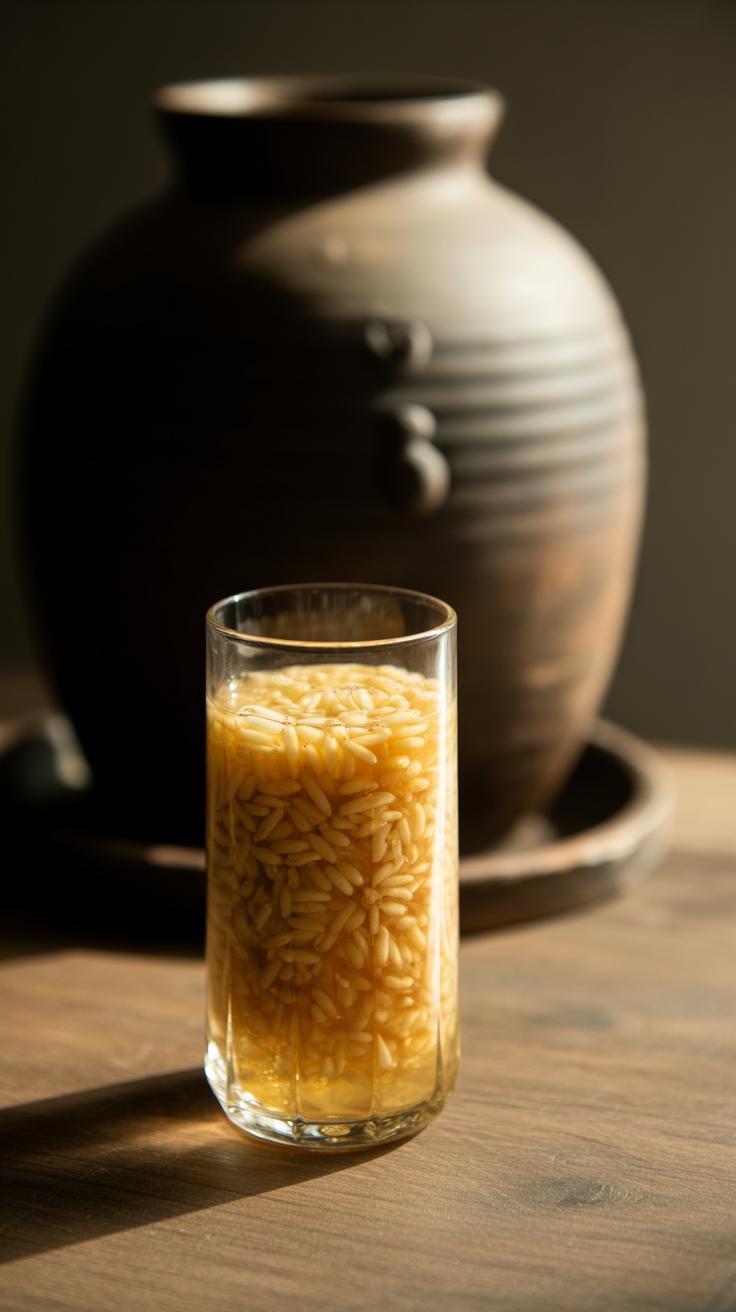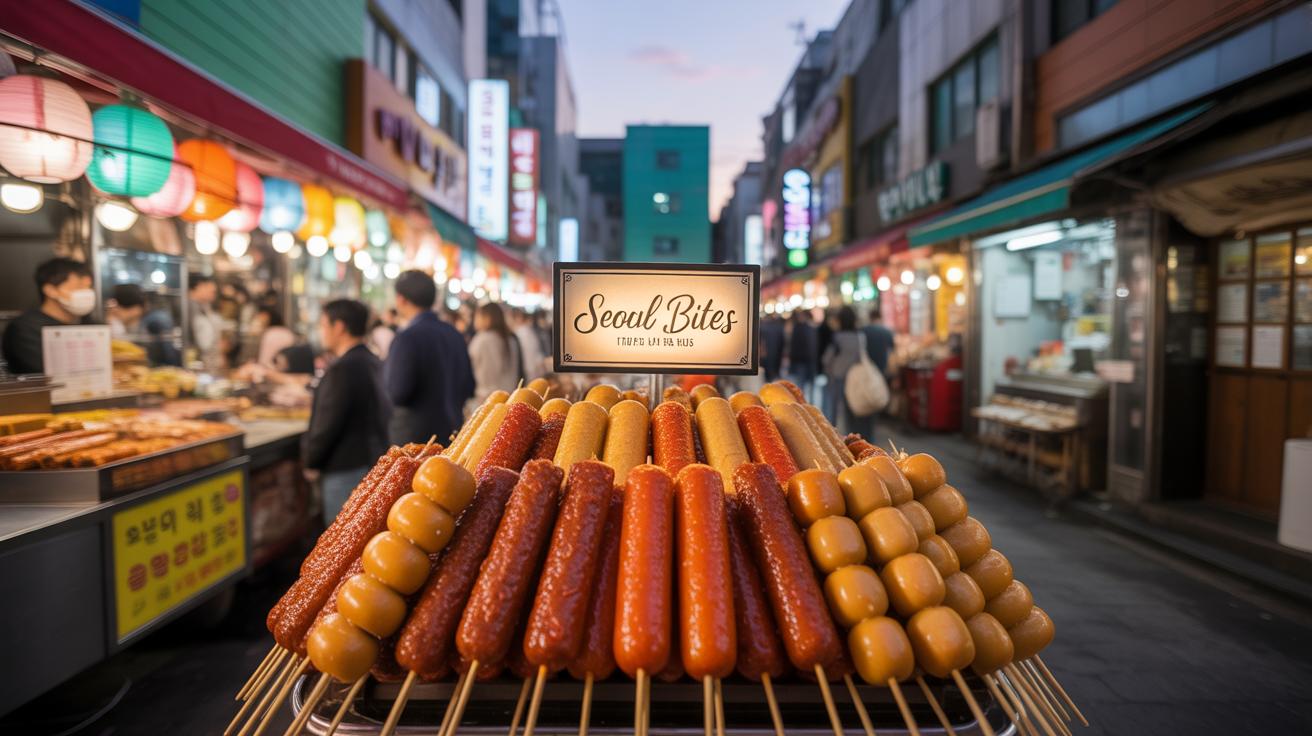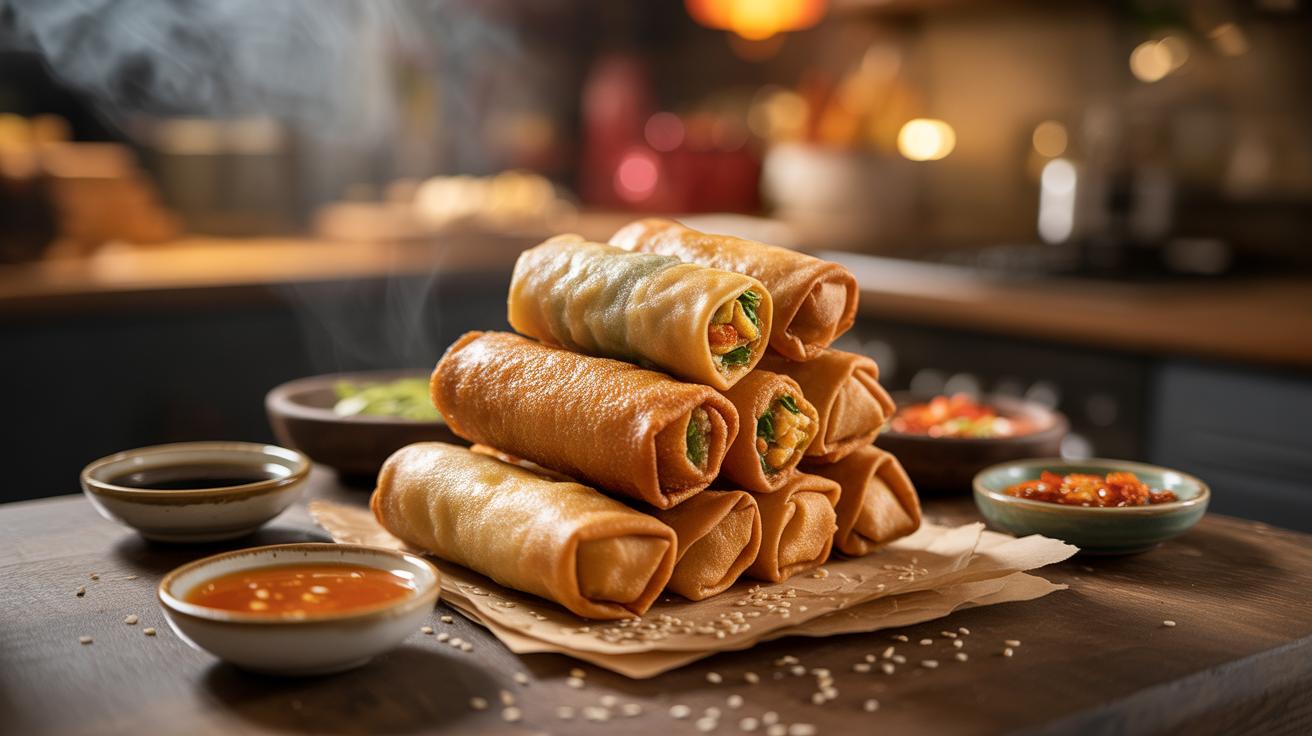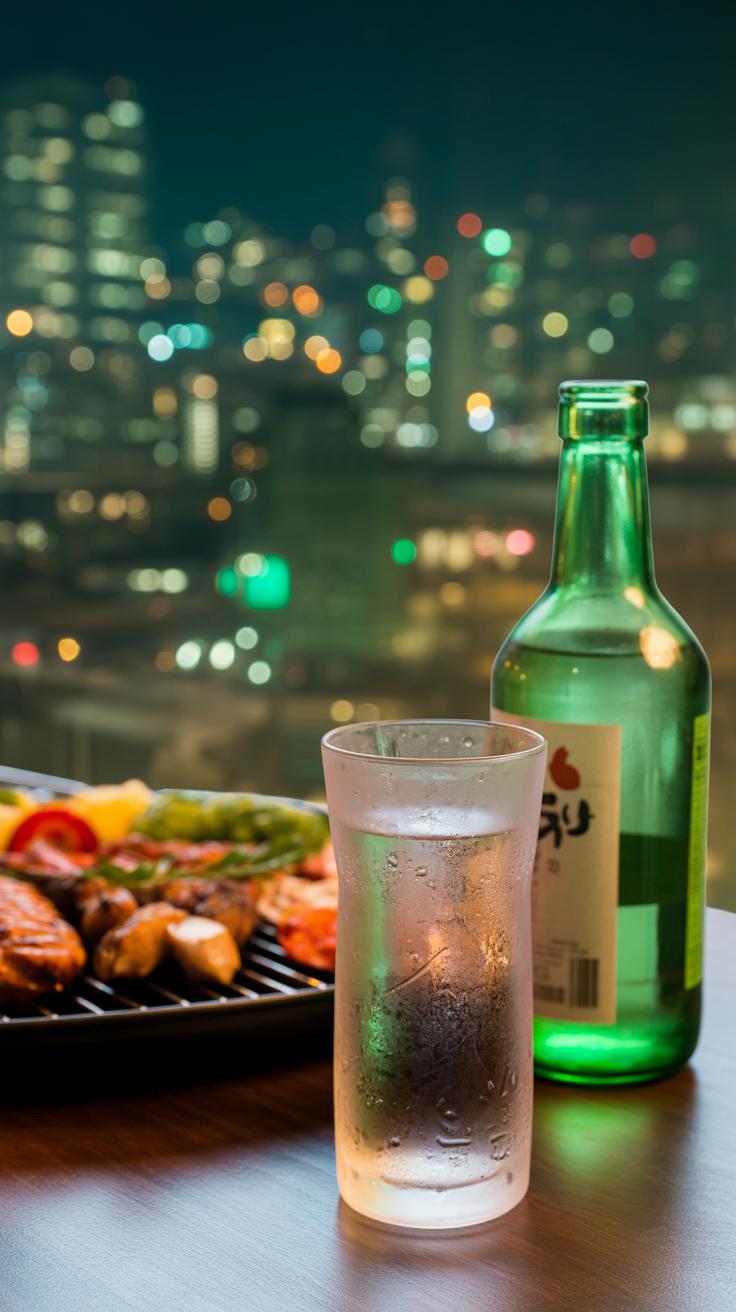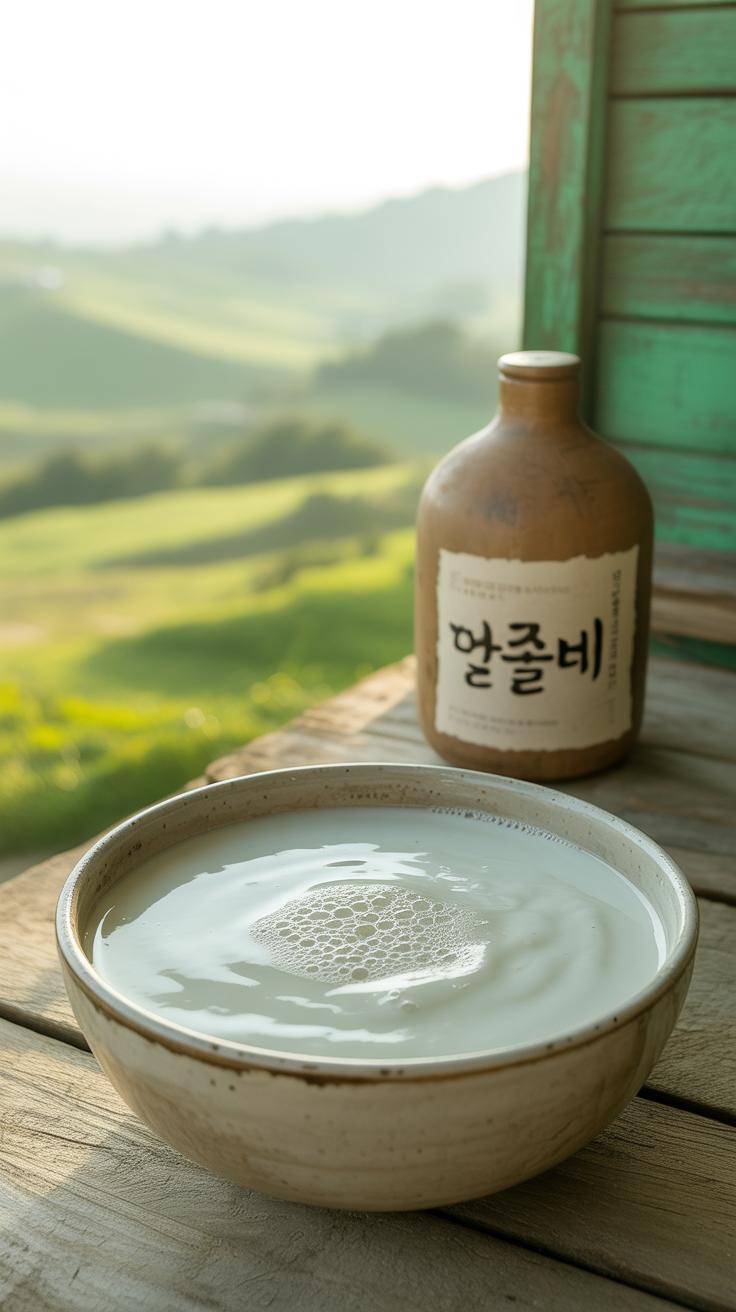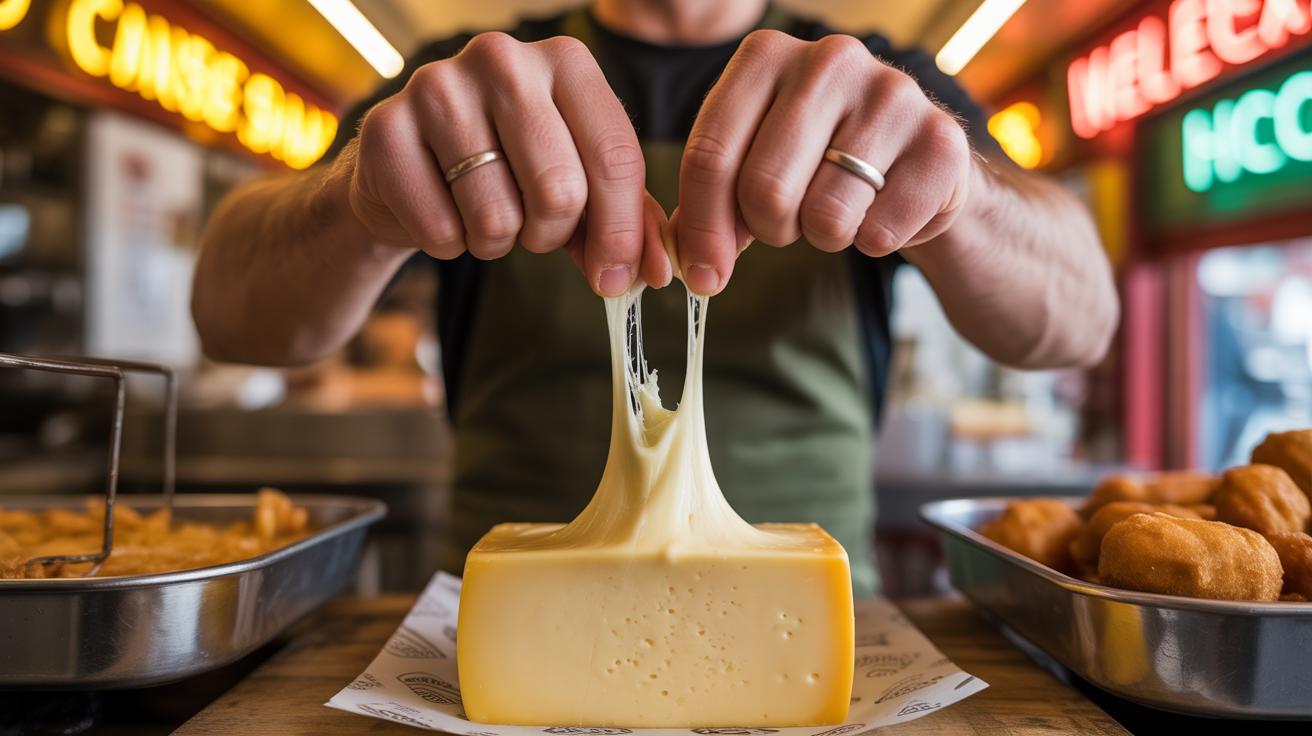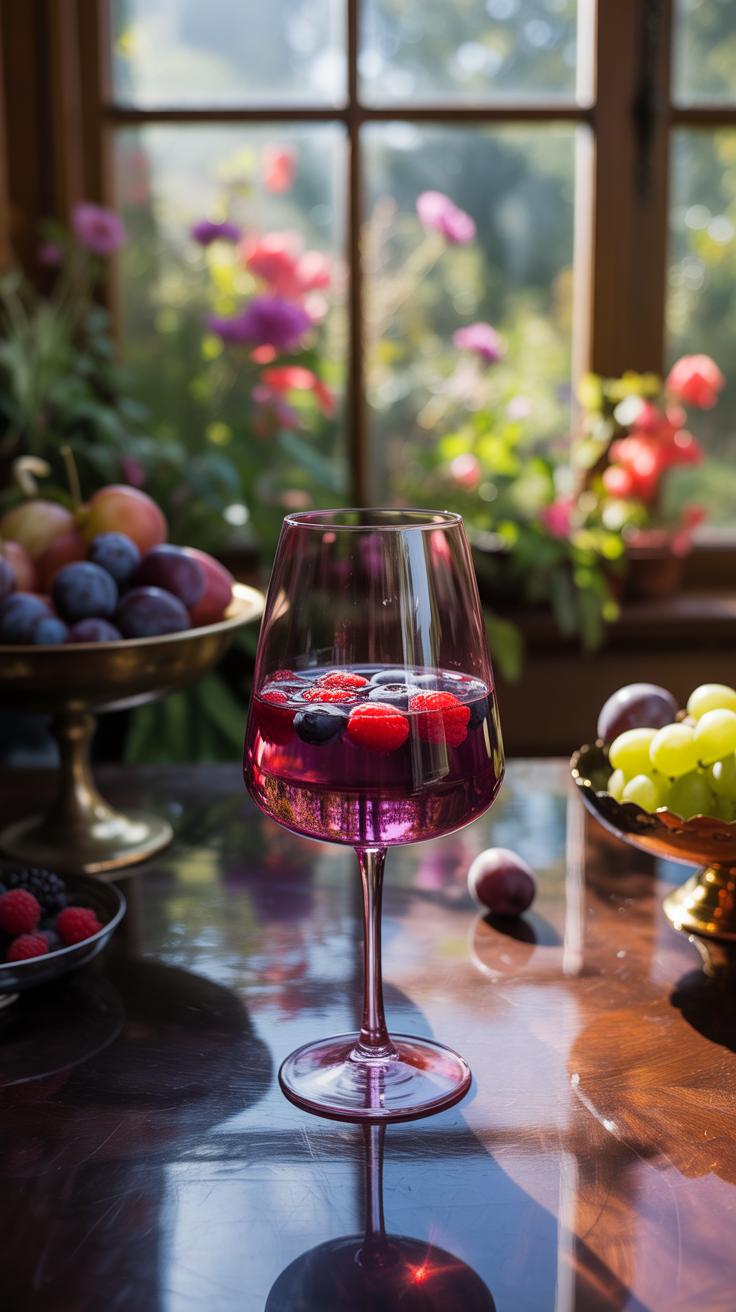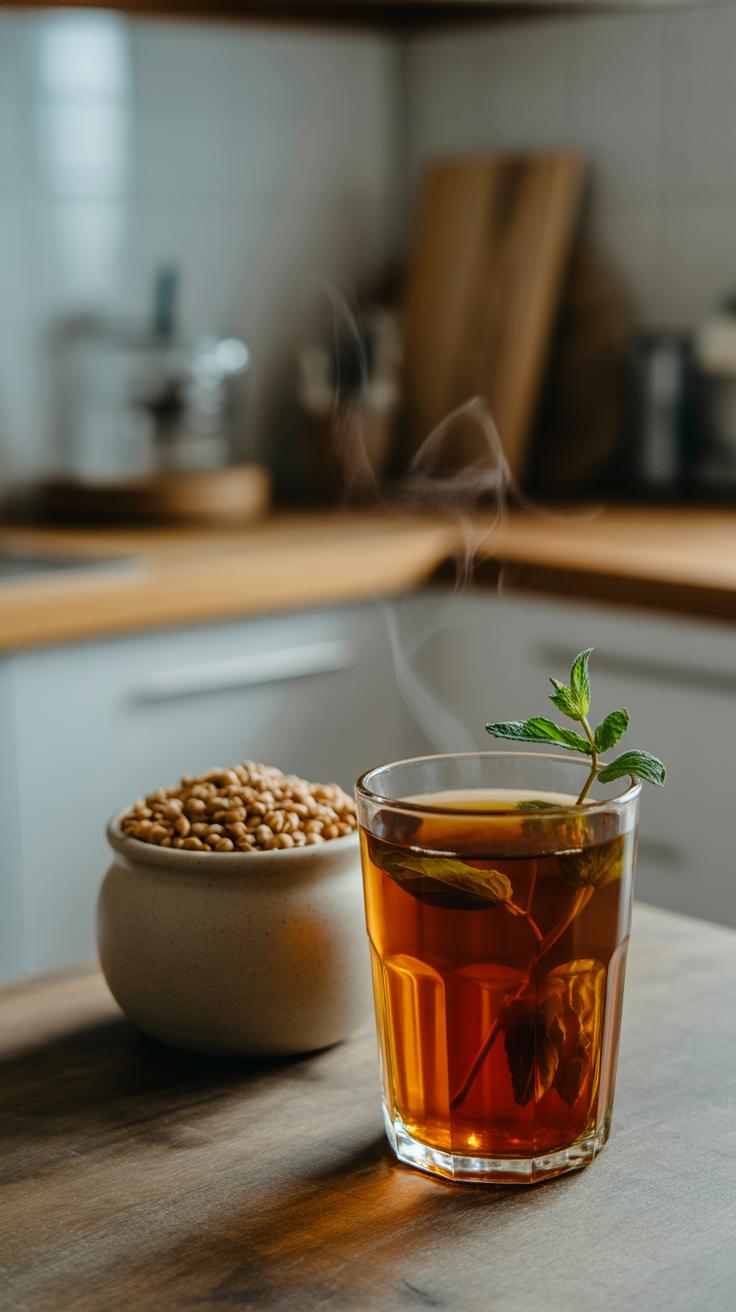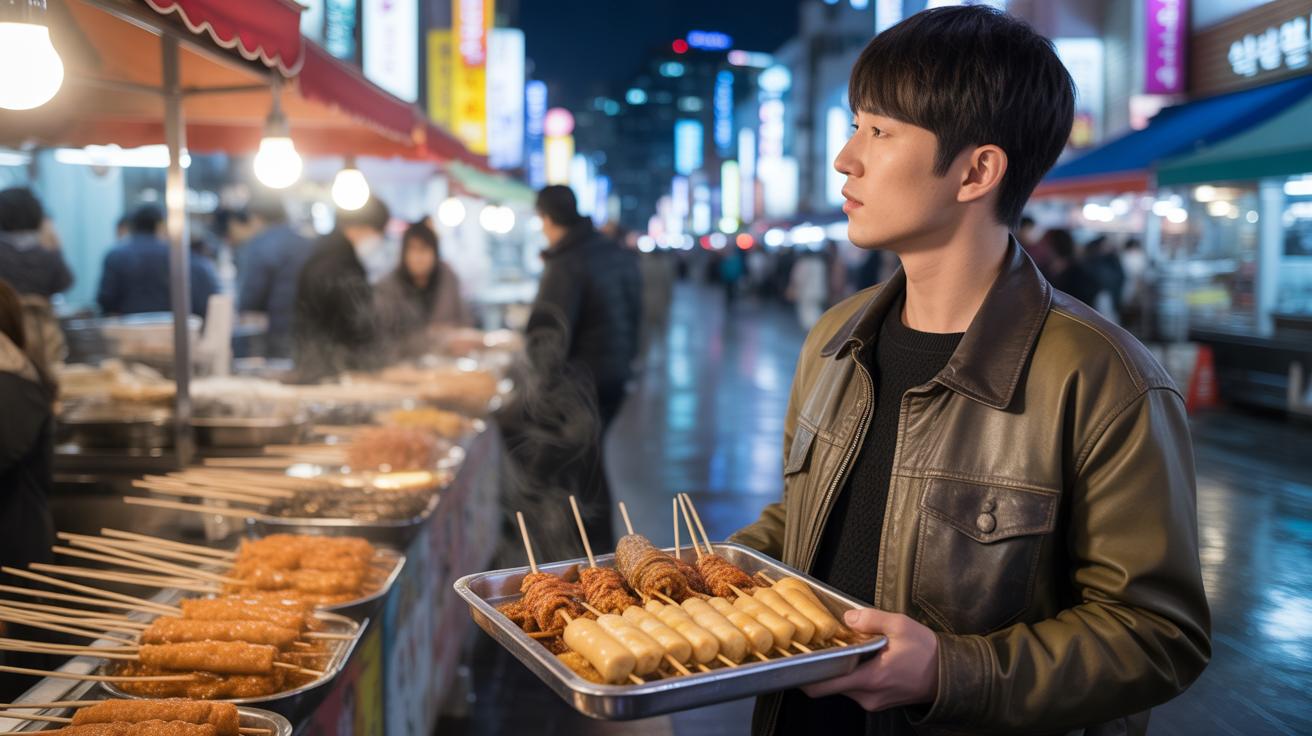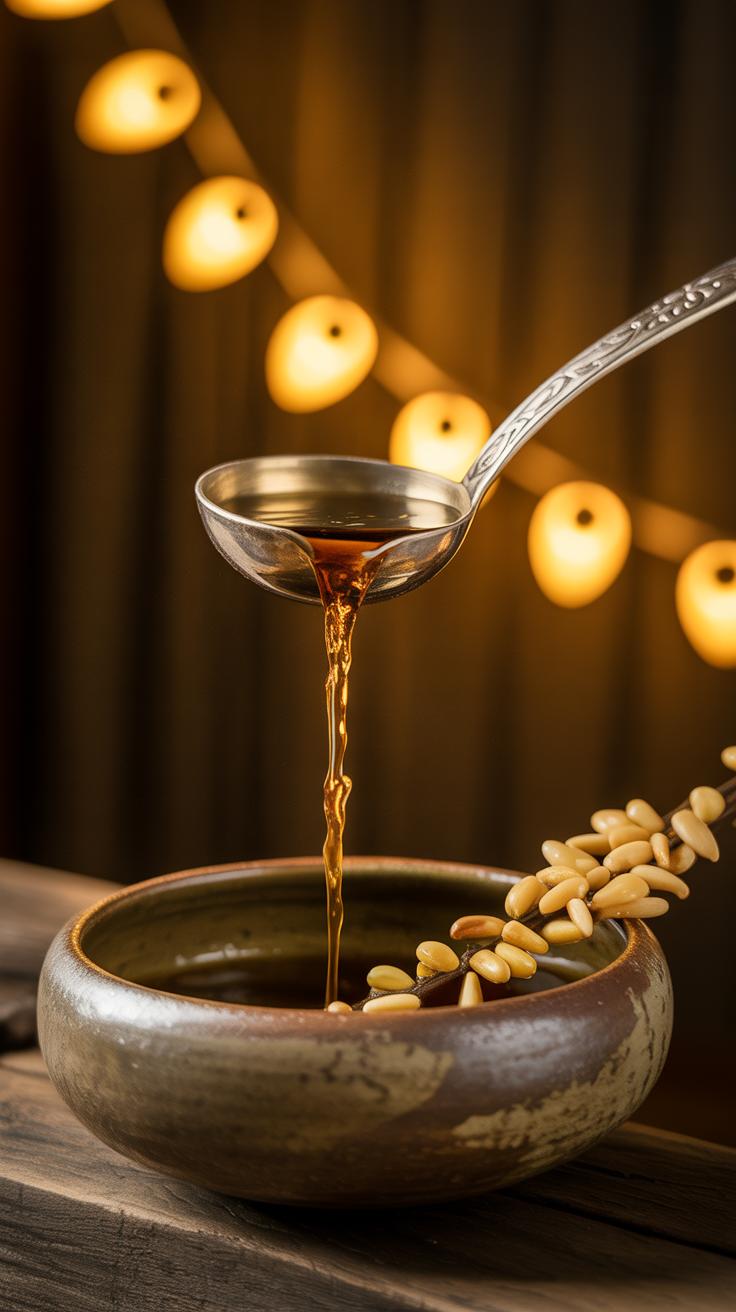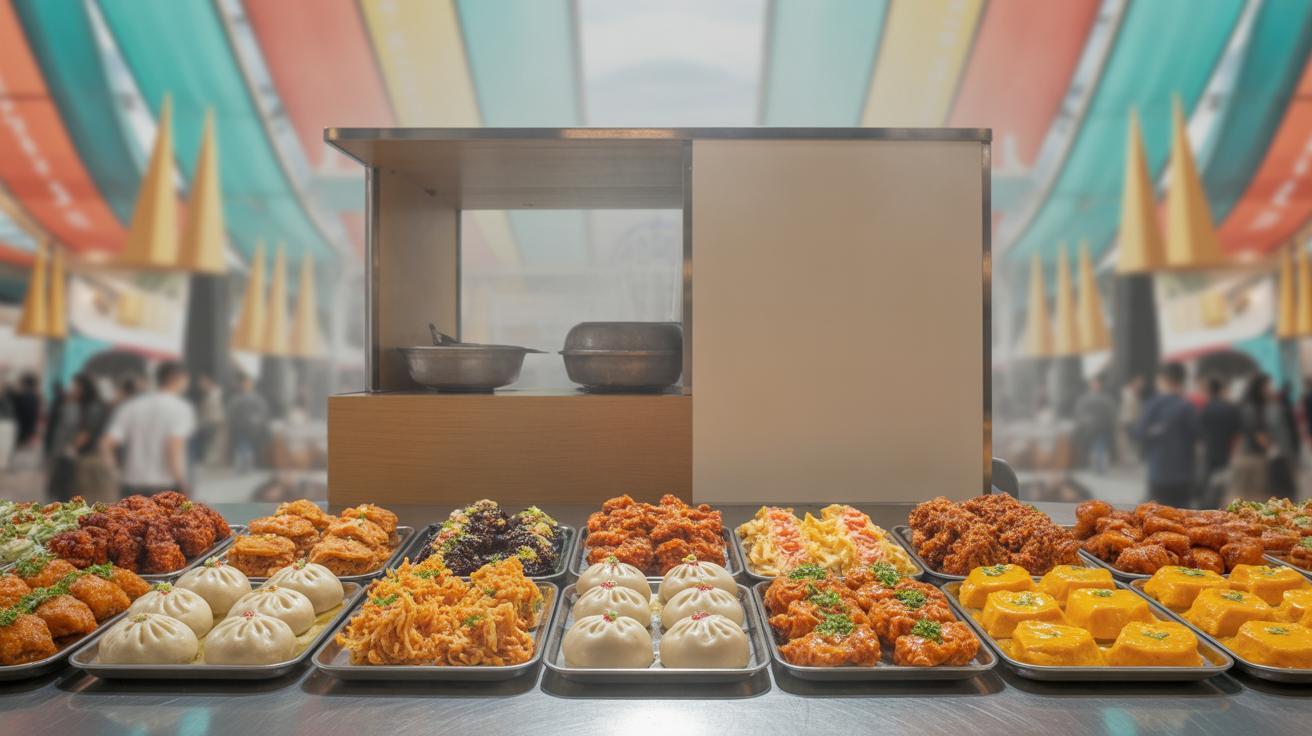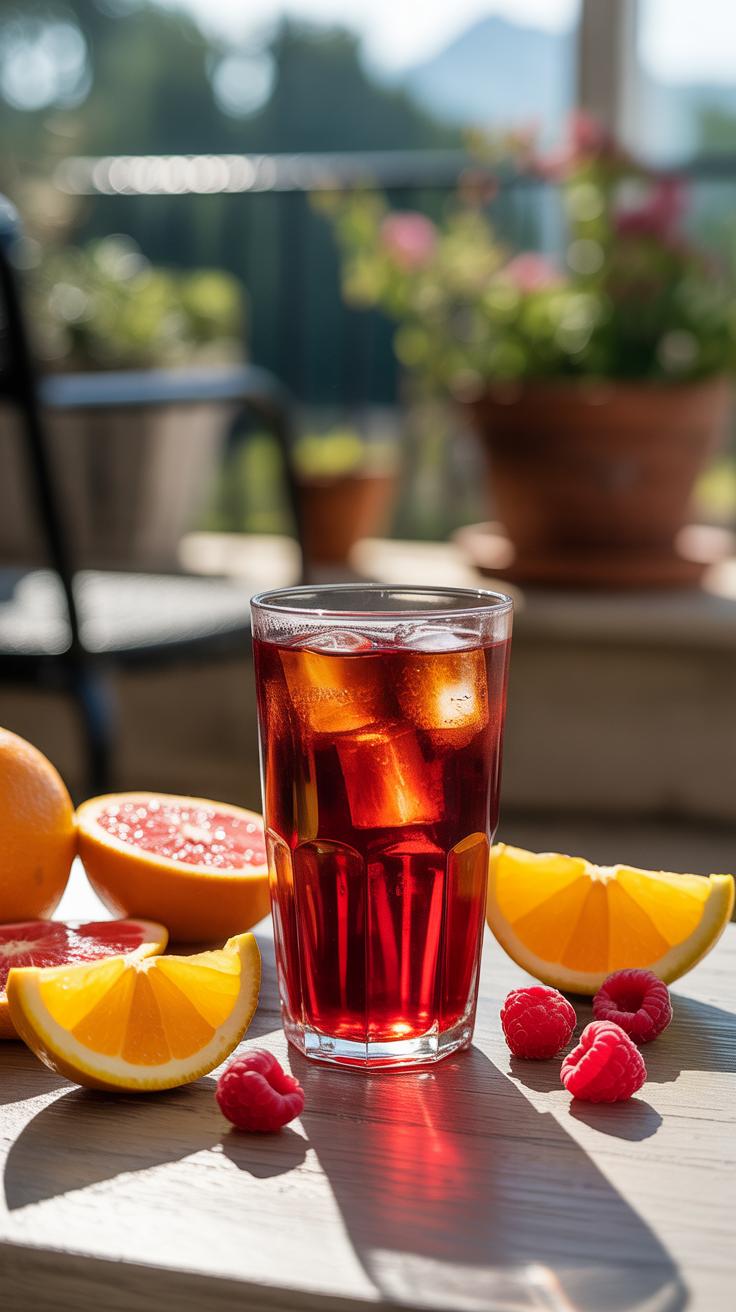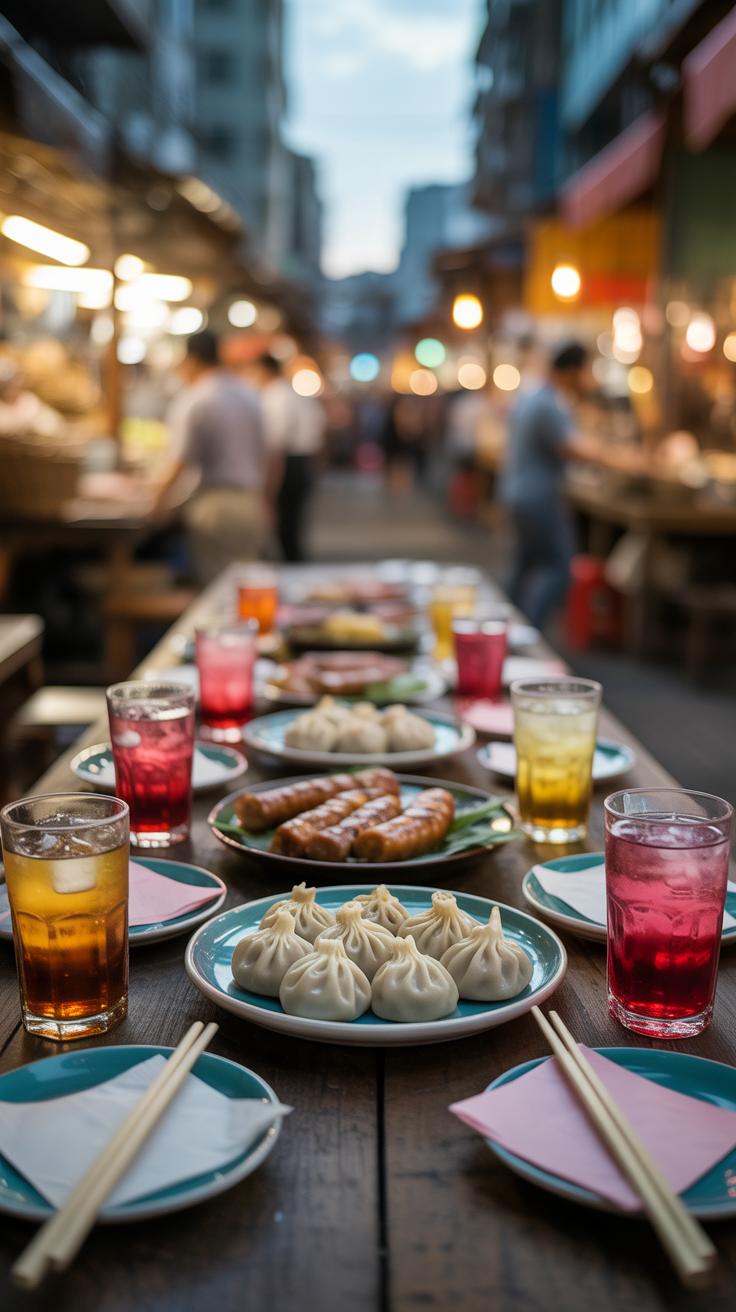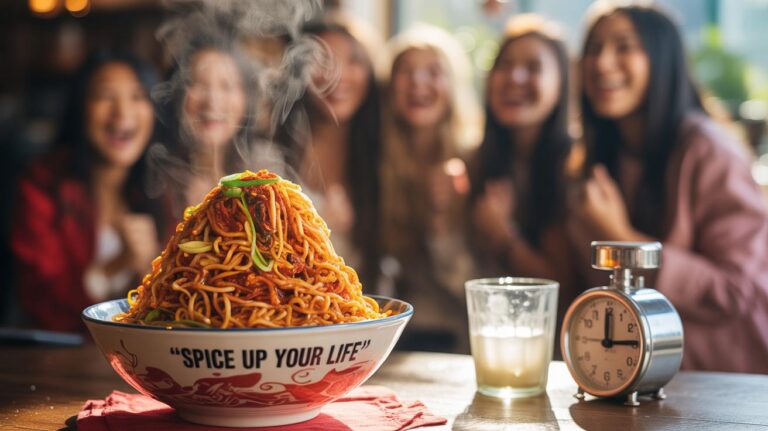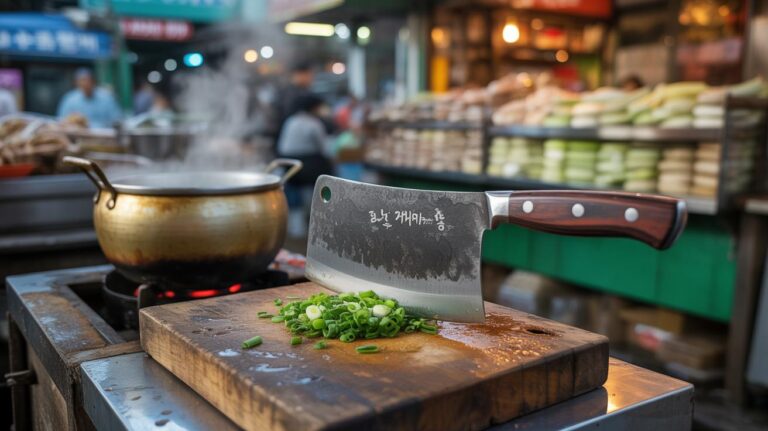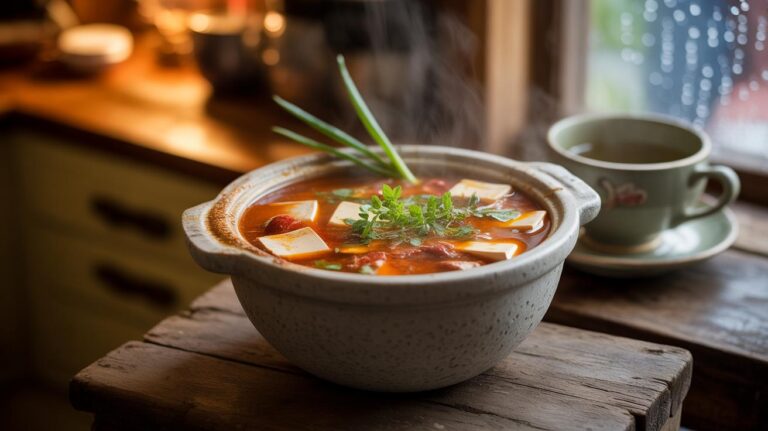Introduction
Korean drinks offer a wide range of flavors that can perfectly complement savory dishes. From soothing teas to fermented rice drinks, these beverages bring unique tastes and cultural heritage to the table. Exploring these drinks helps you enjoy Korean cuisine in a richer way.
This article dives into popular Korean drinks both alcoholic and non-alcoholic. You will learn about traditional drinks like soju and makgeolli, as well as non-alcoholic options like barley tea and sikhye. Each drink can enhance the flavor of your meal while reflecting Korea’s deep culinary traditions.
Understanding Korean Traditional NonAlcoholic Drinks
Korean traditional non-alcoholic drinks, known as eumcheongnyu, cover a broad and interesting range. These beverages go beyond just quenching thirst—they carry stories, rituals, and a sense of balance in meals. You might encounter cha, which simply means tea, but it’s more than what the word suggests. The roots of these drinks dig deep into Korea’s agricultural history and seasonal changes.
Take cha, for instance. It includes teas made from barley, corn, green tea leaves, and more. Each involves toasting or drying raw ingredients, then brewing them to get flavor and warmth. Barley tea, or bori-cha, is a staple in many homes. You’ll find it served cold in summer and hot in winter, appreciated for its nutty taste and ability to soothe digestion, though some find it a bit plain.
Then there’s sikhye, a sweet rice drink made by fermenting malted barley with cooked rice. The sugar in it comes naturally, giving a gentle sweetness and a hint of tang. It’s often served chilled with floating grains of rice—a simple but comforting treat after meals, and something frequently prepared during holidays.
Sujeonggwa, a persimmon and cinnamon punch, combines dried persimmons, cinnamon sticks, and ginger, simmered slowly to release warmth and spice. Served cold with pine nuts, it is especially popular during festive occasions, offering sweetness with a touch of spice—some say it’s the perfect way to end a hearty Korean meal.
These drinks play roles beyond just taste. They support digestion, cleanse the palate, and create a sense of harmony at the table. While some may think of Korean meals as spicy or intense, these traditional drinks offer a gentle counterbalance that’s easy to overlook but hard to forget once experienced.
Popular Korean Teas
In Korean households and restaurants alike, certain teas stand out. Bori-cha, or barley tea, is probably the most common. It’s made by roasting barley to a deep brown, then boiling it in water. The result is a toasty, slightly bitter tea, caffeine-free and easy to sip throughout the day. I remember having it served even in school cafeterias, making it feel like a mundane, yet comforting, constant.
Nokcha, or green tea, tends to feel a bit more refined. It involves steaming or pan-firing fresh tea leaves, which retains a vegetal brightness and mild bitterness. It’s often appreciated in more formal settings and has a more nuanced flavor profile compared to barley tea, which makes it slightly less approachable for those unfamiliar with green teas.
Then there’s oksusu-cha, the less-talked-about corn tea. Roasted corn kernels steep in hot water to yield a light, sweet, and somewhat nostalgic flavor. Honestly, I think it’s one of those underrated staples that doesn’t get the attention it deserves, especially given its gentle aroma and subtle sweetness. All these teas stand out because they’re homemade or made fresh and can be served hot or cold—a versatility that Koreans seem to appreciate.
Sweet and Refreshing Traditional Drinks
Sweet traditional drinks in Korea have a special charm. Sikhye isn’t just a rice drink; it’s also a reminder of ancient fermentation methods and patience. Preparing it means waiting several hours while the malted barley breaks down starches, turning the liquid sweet on its own. It’s usually served cold and sometimes with a sprinkle of pine nuts for added texture. Its mild sweetness makes it popular at festivals and as a dessert accompaniment, especially when you want something light after a heavy meal.
Sujeonggwa takes a different route. Its ingredients—dried persimmons, cinnamon, and ginger—are simmered together, letting those bold flavors meld. It often gets chilled before serving, making it a refreshing final touch. People sometimes debate whether the spicy notes of ginger and cinnamon overshadow the sweetness or complement it, reflecting personal taste differences. Its appearance with bright orange dried persimmons floating in the glass is also quite striking, inviting curiosity before the first sip.
Both drinks are much more than refreshment; they’re woven into Korean rituals, holiday meals, and family traditions. They offer a slow, thoughtful contrast to the quick pace of modern eating. If you haven’t tried these yet, I’d encourage you to do so with an open mind and maybe alongside some savory Korean snacks—you might find they transform your meal in unexpected ways.
Soju The Most Popular Korean Alcoholic Drink
Soju has long held a place at the center of Korean drinking culture. Its origins reach back centuries, originally made from rice, barley, or wheat. Over time, the methods and ingredients evolved—especially during rice shortages—leading producers to include sweet potatoes, tapioca, or other starches. The alcohol content typically ranges between 16% and 25%, making soju smoother and lighter than many other spirits.
While it’s clear why soju remains a favorite, its cultural significance goes beyond just drinking. Sharing soju often marks social bonding, celebrations, and respect. You rarely see it consumed neat or in isolation; it’s almost always paired with savory Korean dishes. The variations are vast, from traditional unflavored versions to modern fruit-infused types that appeal to younger drinkers or those who prefer something less intense.
How Soju is Made and Enjoyed
The traditional soju distillation involved slow, careful steaming and fermenting of the base grains, usually over several weeks. Today, many brands use a dilution method—pyongyang soju is distilled, but mass-produced soju often starts with a neutral spirit base diluted with water and sweeteners to reach the right balance. For some, this shift feels like a loss of authenticity, but it also makes soju more accessible and consistent.
Flavored sojus spring from infusions of fruits like peach, apple, or grapefruit, often mixed with sweeteners to smooth out the alcohol’s sharpness. These options have drawn in people who previously found regular soju too harsh. It’s interesting how the production tweaks have essentially broadened the appeal, making soju far from static.
Soju Drinking Culture
Drinking soju in Korea is rarely casual or solo. It’s a shared experience governed by customs—pouring for others, especially elders, and drinking in unison. The standard ritual often involves a shot glass and quick sips rather than slow sipping, which can surprise outsiders at first.
Food pairings make a difference too. Spicy, salty, or grilled foods like samgyeopsal (pork belly) or spicy chicken fit perfectly with soju’s simplicity. This balance creates a kind of harmony, flavors calming the appetites and complementing each other. Have you noticed how some bites just seem to call for a sip of soju immediately after?
The social context matters as much as the drink itself. It’s about connection—work colleagues finishing the day, friends catching up, or families celebrating. Even if the exact customs aren’t always followed perfectly, this core of sharing feels essential to the soju experience.
Makgeolli The Cloudy Rice Wine
Makgeolli stands out among Korean alcoholic drinks as a uniquely cloudy, milky beverage with a slightly sweet and tangy taste. It is often described as having a creamy texture combined with a gentle fizz, which can catch you off guard if you’re used to clearer rice wines like sake. This drink traces back centuries and is often considered Korea’s oldest alcoholic beverage, with roots reaching as far back as the Three Kingdoms period. Its rustic appeal lies not just in taste but also in history—it’s like a living piece of Korean tradition in a cup.
Unlike other rice wines that tend to be clear and distilled, makgeolli is brewed through a kind of natural fermentation that leaves fine rice particles suspended in liquid, hence its signature cloudiness. You might find that its low alcohol content—usually hovering around 6 to 8 percent—makes it approachable and easy to enjoy over a leisurely meal, rather than a quick shot. This softness has made it popular across different social groups, though its earthy flavor can be polarizing if you’re expecting something sweeter or more refined.
Traditional Preparation of Makgeolli
The making of makgeolli begins with steamed rice mixed with nuruk, a fermentation starter made from wheat, barley, or rice covered in natural microbes. This mixture is then left to ferment, typically in earthenware jars that breathe but maintain a cool temperature. The process takes about a week, during which natural yeast and bacteria convert the starches into sugars and then into alcohol. What’s interesting is how the fermentation naturally produces carbonation, giving makgeolli that slight effervescence, without adding artificial bubbles.
This traditional preparation is often done in homes or small-scale breweries that prioritize natural ingredients and time-honored methods. When served, it’s usually poured from a large bowl into small cups, inviting a sense of togetherness. The sediment settles quickly, so you’re expected to stir or shake gently beforehand to enjoy the full flavor and texture. The experience differs vastly from sipping clear, distilled spirits, and it often feels more casual and communal.
Modern Variations and Pairings
Over recent years, makgeolli has seen a renaissance, especially in urban areas and among younger drinkers. Many producers experiment with added fruits like yuzu or persimmon, or infuse flavors such as chestnut or ginger. These changes reflect evolving tastes but maintain the core characteristics of makgeolli’s cloudy appearance and mild acidity.
In contemporary dining scenes, makgeolli pairs wonderfully with savory Korean dishes. Spicy pancakes, grilled meats, and fried chicken are classic accompaniments that highlight its subtly sweet and tangy notes. I’ve noticed that its creamy texture also cools the palate, balancing rich and greasy flavors. Whether at a traditional market eatery or a trendy bar, makgeolli invites you to slow down and savor each bite and sip, creating a relaxing rhythm between food and drink.
Fruit Wines and Infused Drinks
Bokbunja Ju Black Raspberry Wine
Bokbunja-ju is a unique Korean fruit wine made from black raspberries, known locally as bokbunja. Its deep, dark red color catches your eye first. The flavor is a bit sweet with a tart edge, sometimes described as a balance between berry freshness and a hint of earthiness. You might find it surprisingly smooth, even a little rich.
This wine mostly comes from the southern provinces of Korea, especially Gyeongsangnam-do. The region’s climate seems to suit the berries perfectly, giving the wine its characteristic depth. Many people enjoy bokbunja-ju not just for taste but also for what they say about its health effects. It’s often believed to help with stamina and vitality—something that’s been traditionally linked to improving male health, though scientific evidence is patchy at best. Still, it’s part of why it’s popular in certain age groups and during seasonal changes.
Other Infused Alcoholic Beverages
Korea’s interest in infusing alcohol with various herbs and fruits stretches beyond bokbunja-ju. You’ll find drinks made by soaking medicinal herbs, jujubes, ginseng, or even chrysanthemum petals in rice wine or soju. Each infusion carries its own flavor and suggested benefits. Sometimes, these drinks are made for celebrations, other times simply to relax after a long day.
Common examples include omija-ju, made from five-flavor berries, which tastes tart and sweet, and ginseng-infused liquors thought to boost energy and immune function. These infusions blend flavor with a sense of tradition, though whether they actually “heal” you is always up for debate. Many Koreans drink them expecting wellness, or as a way to soothe digestion while pairing with heavier dishes.
If you’re curious about trying these, remember they often pack a kick, so sip slowly. They add variety and maybe a little mystery to the drink table, especially if you like the idea of something both herbal and mildly sweet, with a story behind it.
Barley Tea and Other GrainBased Teas
Barley Tea A Staple in Korean Homes
Barley tea, or bori-cha, is more than just a drink in Korea. It’s a daily companion for many, often replacing plain water at meals or throughout the day. The tea is made by roasting barley grains until they turn a warm brown, then boiling or steeping them in hot water. This roasting brings out a nutty aroma, a gentle bitterness, and a subtle toasted flavor that’s surprisingly comforting once you get used to it.
People tend to drink it hot in winter and cold in summer—it’s oddly refreshing both ways. I’ve noticed that it’s ubiquitous, from street vendors to high-end homes. It’s caffeine-free, simple, and hydrating. That makes it ideal for kids and elders alike, and you might find yourself sipping on it without even realizing how much you’ve drunk. It’s soothing, almost bland, but in a way, it encourages you to eat and drink more alongside your meals.
Combining Grains for Unique Flavors
There’s a whole world of grain teas beyond barley. Corn tea, known as oksusu-cha, is one such example. It’s made similarly—roasting dried corn kernels until their fragrance emerges, then steeping in hot water. Corn tea is sweeter and lighter than barley tea, with a mild flavor that can feel almost creamy. Interesting enough, oxksusu-cha offers a change of pace if you want something gentle but a little distinctive.
Sometimes, Koreans blend roasted grains—barley with maize, or even brown rice—to create complex tastes and aromas. These blends can vary from household to household, depending on personal preference or tradition. Such mixtures might taste a bit different every time, which makes them feel homemade and personal.
Besides taste, these grain teas are thought to help digestion and provide mild warmth, which might be why they’ve remained popular. Their natural simplicity is appealing when you want a break from sugary drinks or caffeinated teas. Have you ever tried brewing your own grain tea? It’s quite straightforward and might just be a pleasant surprise to your palate.
Sikhye The Sweet Rice Drink
How Sikhye is Made and Served
Sikhye begins with malted barley, which plays a key role in breaking down starches into sugars. The malt is soaked and mixed with cooked rice, then left to ferment at a warm temperature. This process creates the sweet flavor and soft texture you find in the drink. After fermentation, the mixture is boiled briefly to stop the activity and to clarify the liquid.
You’ll find regional twists, like Andong sikhye, which adds vegetables such as radish and even a hint of red pepper. This version feels less sweet and more savory—almost a side dish rather than a dessert. I remember tasting it once and being surprised how different it was from the sikhye I’d known.
In traditional settings, sikhye often contains floating grains of cooked rice, which give it a chewy bite. It’s served chilled and usually enjoyed at the end of a meal or as a light snack.
Health Benefits and Cultural Roles
Many Koreans believe sikhye helps digestion—something I’ve always found interesting. The malt enzymes that continue breaking down starches make it soothing after heavy food. It’s not just about taste but also function. The drink is gentle, mild, and oddly satisfying in comforting your stomach.
Traditionally, sikhye holds a place at festive meals and holidays, appearing as a gentle conclusion to the feast. It’s one of those drinks that connects you to culture without needing to say much. The sweet, lightly fermented soda-like flavor can feel refreshing, especially following spicy or oily dishes.
Have you ever noticed how simple ingredients—malt and rice—can create something this layered? Sikhye might feel humble, but it quietly complements many flavors and moments.
Omija Tea Five Flavor Berry Drink
Omija-cha is a traditional Korean tea made from dried Schisandra berries, known locally as “five-flavor berries.” These tiny red berries pack in an unusual mix of tastes—sweet, sour, salty, bitter, and pungent—all at once. It’s not common to find a drink with so many flavors blended naturally, which makes omija-cha quite unique. I think that’s part of why it’s remained popular for centuries. It’s not just a drink; it carries a certain complexity that’s rare.
Preparing omija-cha mostly involves boiling the dried berries to pull out their flavors. You can also cold brew it by grinding the seeds and letting them steep slowly, which results in a softer, more subtle taste. Honey often gets added afterward, smoothing out the sharp edges and balancing the sour notes. The tea can be enjoyed hot or cold, depending on the season or mood—a warming comfort in winter, or a refreshing chill in summer.
People believe omija-cha helps with blood circulation and supports kidney function. It’s considered medicinal but also revitalizing, a gentle boost rather than a strong stimulant. I’ve tried it a few times when feeling sluggish. It doesn’t jolt you awake, but somehow makes you feel steadier, a bit more grounded. Whether those health claims hold up scientifically is unclear, but the drink’s lasting place in Korean culture speaks to its perceived value.
Pairing Korean Drinks With Savory Bites
Korean drinks often play a key role in balancing the strong and bold flavors of savory foods. The interplay between drinks and dishes helps soften richness, cut through spice, or cleanse the palate, making the overall dining experience more enjoyable. For example, sweet or slightly acidic beverages can counteract the heaviness or oiliness of certain dishes.
When it comes to alcoholic options, soju and makgeolli are favorites alongside grilled meats, spicy stews, and fried snacks. Soju’s clean and neutral profile often refreshes the palate between bites of fatty meat like samgyeopsal. The subtle sweetness and mild acidity in makgeolli can also help mellow the heat of something like kimchi jjigae or the crunch of fried dakgangjeong.
On the other hand, lighter, non-alcoholic drinks such as barley tea or sikhye pair better with more delicate dishes. Think vegetable pancakes or light seafood—here, the gentle bitterness of barley tea offers a pleasant contrast, while sikhye’s subtle sweetness complements without overpowering. It’s interesting how these drinks almost seem to enhance freshness, encouraging you to savor the textures and simpler flavors.
Have you noticed how the bitterness in barley tea seems to refresh your appetite? Or how the slight tang in makgeolli rounds out spicier stews? These contrasts add a subtle rhythm to Korean meals, keeping your taste buds curious and engaged throughout the feast.
Modern Trends in Korean Drinking Culture
Flavored sojus have become a hot topic lately, especially among younger drinkers. Think fruity varieties like peach, grapefruit, or apple that soften the classic soju’s sharp kick. These flavors make the drink more approachable, even for those who might shy away from traditional liquor. It’s interesting how a little sweetness can shift the whole experience, almost inviting you to try more than you planned.
Craft makgeolli is another trend catching on. These small-batch brews often showcase local ingredients or unexpected twists—like adding herbs or floral notes. The packaging itself sometimes looks more like an artisanal product than a typical rice wine. I remember seeing one bottle wrapped in simple paper, almost like a gift, which felt personal and special. It’s a way to make an ancient drink feel fresh again without losing its roots.
Bottled traditional drinks are also rising in popularity, partly because of convenience. Busy urban lifestyles call for something portable, and now you can find makgeolli or various teas sold in sleek bottles at convenience stores. It’s an easy way to get a taste of Korea’s heritage without the fuss of traditional preparation. Though, I sometimes wonder if that convenience strips away part of the ritual that makes these drinks special.
Innovations in Traditional Beverages
New flavors are popping up too, beyond just fruit additions. Some makers blend makgeolli with coffee or chocolate, veering into territory some might find unusual. This experimentation seems geared toward younger consumers who want novelty but still an authentic touch. Packaging plays a big role here—bright labels, minimalistic designs, and sometimes even eco-friendly materials that appeal to a more conscious buyer.
Brands carefully balance modern aesthetics with traditional elements. For example, a label might carry calligraphy alongside a bold cartoon character. This mix can feel playful but also rooted in cultural identity. It’s a curious balance that may not please purists, but it definitely grabs attention. It also makes you think: How far can these beverages stretch before they lose their essence?
Korean Drinks Abroad
Soju and makgeolli are showing up in bars and Asian markets worldwide, boosting Korean cuisine’s presence outside Korea. Restaurants often highlight these drinks as part of the experience, rather than just offering beer and sake. The deeper availability encourages people to explore and sometimes even replicate Korean drinking traditions at home.
The international rise of these beverages raises some questions too. Will soju remain the simple, clear spirit it’s known for, or will the global market push more flavored, hybrid versions? Similarly, makgeolli’s rustic charm could clash with demands for consistency and shelf life abroad. Yet, it’s exciting to see Korean drinks open new doors, sparking curiosity about the food culture that pairs with them.
Conclusions
Korean drinks range from light, refreshing teas to rich, flavorful alcoholic beverages. Each type complements different savory foods while offering distinct tastes and health benefits. Whether you want a cooling barley tea or a bold soju, Korean drinks add something special to your dining experience.
By pairing these traditional beverages with your meals, you can explore Korean culture through flavor. You might find your new favorite drink to enjoy alongside popular dishes. These drinks show how Korean cuisine celebrates balance and harmony between food and drink.


